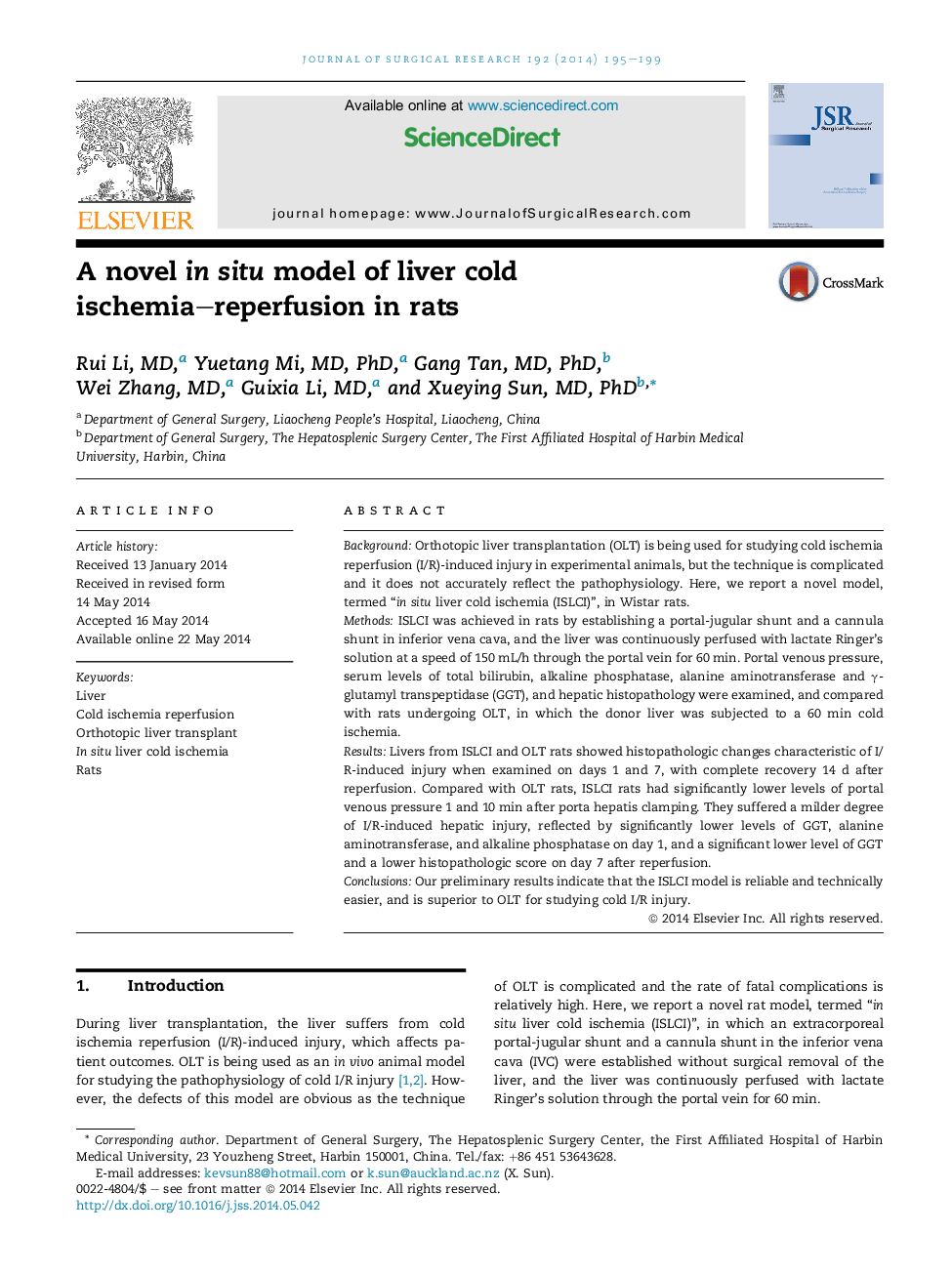| Article ID | Journal | Published Year | Pages | File Type |
|---|---|---|---|---|
| 4300082 | Journal of Surgical Research | 2014 | 5 Pages |
BackgroundOrthotopic liver transplantation (OLT) is being used for studying cold ischemia reperfusion (I/R)-induced injury in experimental animals, but the technique is complicated and it does not accurately reflect the pathophysiology. Here, we report a novel model, termed “in situ liver cold ischemia (ISLCI)”, in Wistar rats.MethodsISLCI was achieved in rats by establishing a portal-jugular shunt and a cannula shunt in inferior vena cava, and the liver was continuously perfused with lactate Ringer's solution at a speed of 150 mL/h through the portal vein for 60 min. Portal venous pressure, serum levels of total bilirubin, alkaline phosphatase, alanine aminotransferase and γ-glutamyl transpeptidase (GGT), and hepatic histopathology were examined, and compared with rats undergoing OLT, in which the donor liver was subjected to a 60 min cold ischemia.ResultsLivers from ISLCI and OLT rats showed histopathologic changes characteristic of I/R-induced injury when examined on days 1 and 7, with complete recovery 14 d after reperfusion. Compared with OLT rats, ISLCI rats had significantly lower levels of portal venous pressure 1 and 10 min after porta hepatis clamping. They suffered a milder degree of I/R-induced hepatic injury, reflected by significantly lower levels of GGT, alanine aminotransferase, and alkaline phosphatase on day 1, and a significant lower level of GGT and a lower histopathologic score on day 7 after reperfusion.ConclusionsOur preliminary results indicate that the ISLCI model is reliable and technically easier, and is superior to OLT for studying cold I/R injury.
